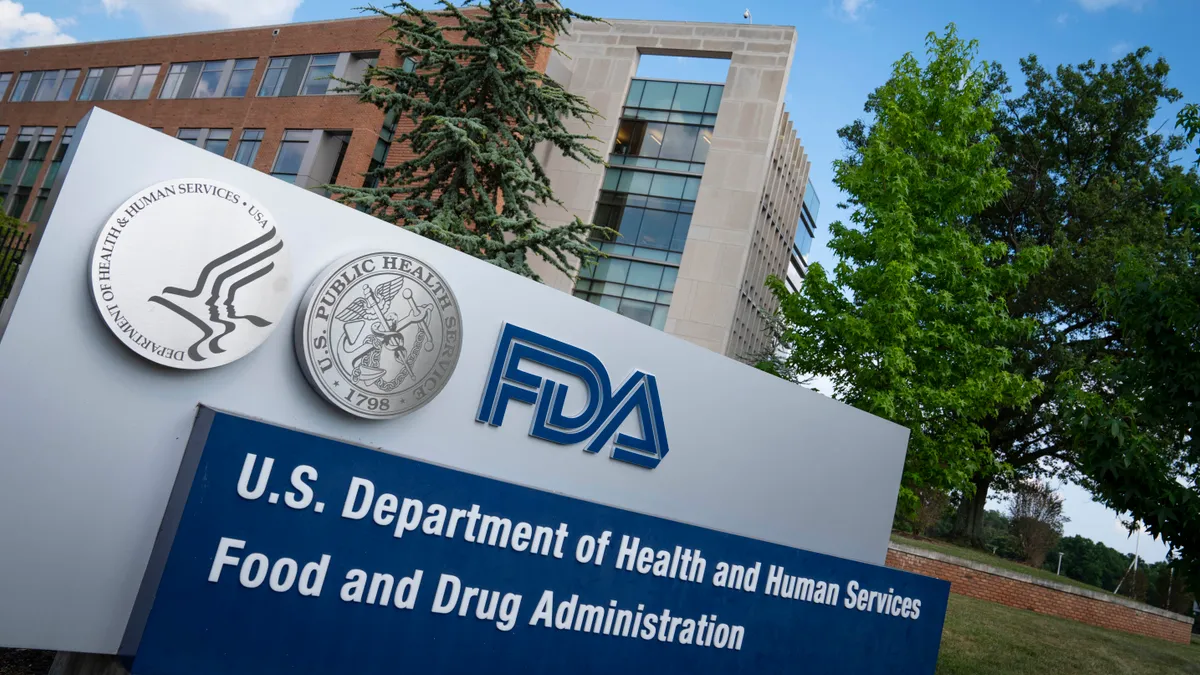Dive Brief:
- The Food and Drug Administration has authorized the first COVID-19 diagnostic test that detects the virus in breath samples. InspectIR Systems' COVID-19 Breathalyzer provides results within three minutes.
- The test, which is designed for use by trained operators, detects five volatile organic compounds (VOCs) associated with SARS-CoV-2 infection using a portable gas chromatography system and a quadrupole mass spectrometer. FDA expects the test to be run at doctors' offices, hospitals and mobile testing sites.
- In a multi-site study of more than 2,000 asymptomatic individuals, the test achieved a sensitivity of 91.2% and specificity of 99.3% versus polymerase chain reaction (PCR), leading the FDA to grant emergency use authorization but advise against using the breathalyzer as the sole basis for treatment decisions.
Dive Insight:
Researchers around the world began looking into the potential to detect COVID-19 in breath in the early weeks of the pandemic, leading to multiple authorizations in overseas territories. However, testing in the U.S. has remained limited to nose, throat and saliva samples. That changed late last week when the FDA granted an EUA to InspectIR.
The authorization covers an instrument that is around the size of a piece of carry-on luggage. Under the supervision of a healthcare provider, a trained operator asks the individual being tested to blow into a cardboard straw inserted in the side of the instrument. The individual needs to provide a sample of 0.25L of exhaled breath, something most people will do in 10 seconds or less.
Inside the instrument, the breath sample interacts with InspectIR's patented preconcentrator to collect and concentrate specific VOC targets.
The five VOCs, which are in the ketone and aldehyde families, are associated with the coronavirus infection. Once concentrated, VOCs are detected by a residual gas analyzer and an algorithm determines if the mix is indicative of COVID-19. The software then tells the operator if the sample is negative or presumptive positive. All that happens in less than three minutes.
However, the "presumptive positive" wording points to a limitation of the test. People who test positive should take a molecular test such as a PCR to confirm if they are infected. Similarly, FDA is advising healthcare professionals to consider negative results in light of "a patient's recent exposures, history and the presence of clinical signs and symptoms consistent with COVID-19."
InspectIR generated data to support the EUA in a study of 2,409 asymptomatic individuals. PCR tests found 102 individuals were COVID-19 positive. The InspectIR test delivered nine false negatives and 17 false positives. As the study took place before the spread of omicron, InspectIR ran a trial in February to assess the test in 12 symptomatic subjects. The trial found no concerns about the detection of omicron.
Having secured EUA, InspectIR plans to make around 100 instruments a week. As each instrument can be used to evaluate around 160 samples a day, the FDA calculated the EUA could increase U.S. testing capacity by around 64,000 samples a month.










